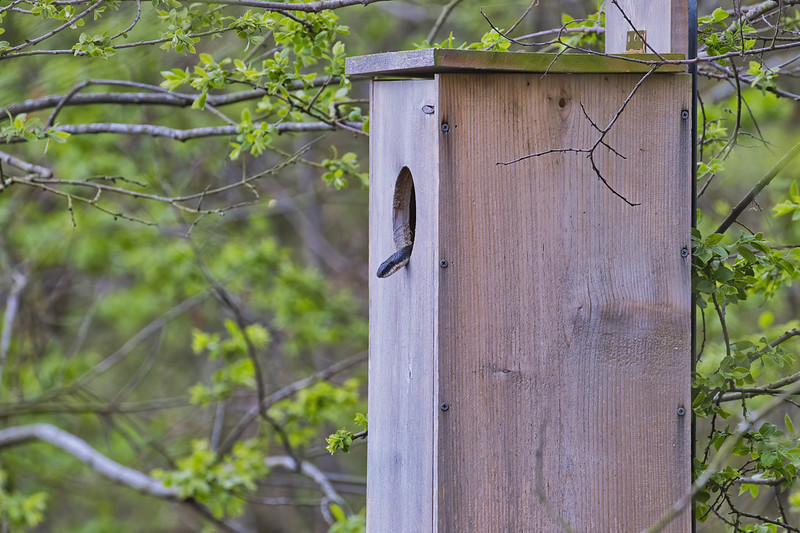I was recently driving the auto tour road at the Sequoyah National Wildlife Refuge when I came across an unexpected sight – a snake right inside the main nesting compartment of a wood duck nest box!

This unwelcome visitor appeared to be a Ratsnake, and it likely gained entry from a nearby tree that had been toppled by a storm. Interestingly, the nest box had a predator guard at the bottom of the pole supporting the box. It seems the guard did its job in partially deterring the snake, but not entirely.
This encounter highlights the importance of proper nest box placement and design. The Wood Duck nesting box in question is located on the west end of the Sally Jones West Causeway (south side of the auto tour road).
Here are some tips for installing wood duck nest boxes, to enhance their effectiveness and keep ducklings safe:
- Location is key: Place the nest box in an area that attracts cavity-nesting ducks, such as wooded wetlands with year-round water or along riverbanks and lake shorelines.
- Protect the vulnerable: Always include a predator guard below the entrance hole to deter raccoons, snakes, and other predators from reaching the eggs and ducklings inside. Ensure the guard extends upwards enough to prevent climbing predators from reaching the box itself.
- Mounting matters: Consider sturdy mounting options like steel poles beside or above water, or poles fixed firmly in the soil or marsh bottom. Make sure there are no overhanging branches or structures near the box that could provide access for climbing predators.
- Clear access, open water: When positioning the box, ensure the entry flyway is clear of obstructions and faces near fresh water, but away from trees where predators might lurk.
By following these guidelines, you can help provide safe nesting spots for wood ducks and contribute to their conservation efforts.
